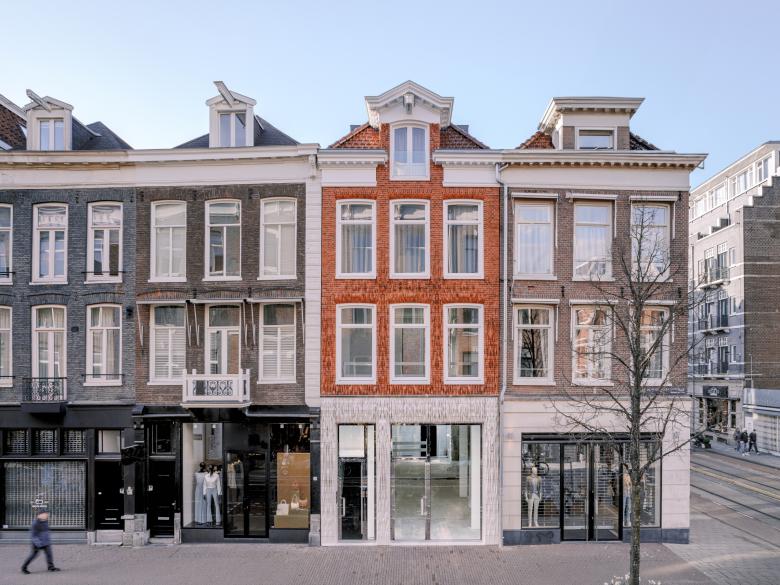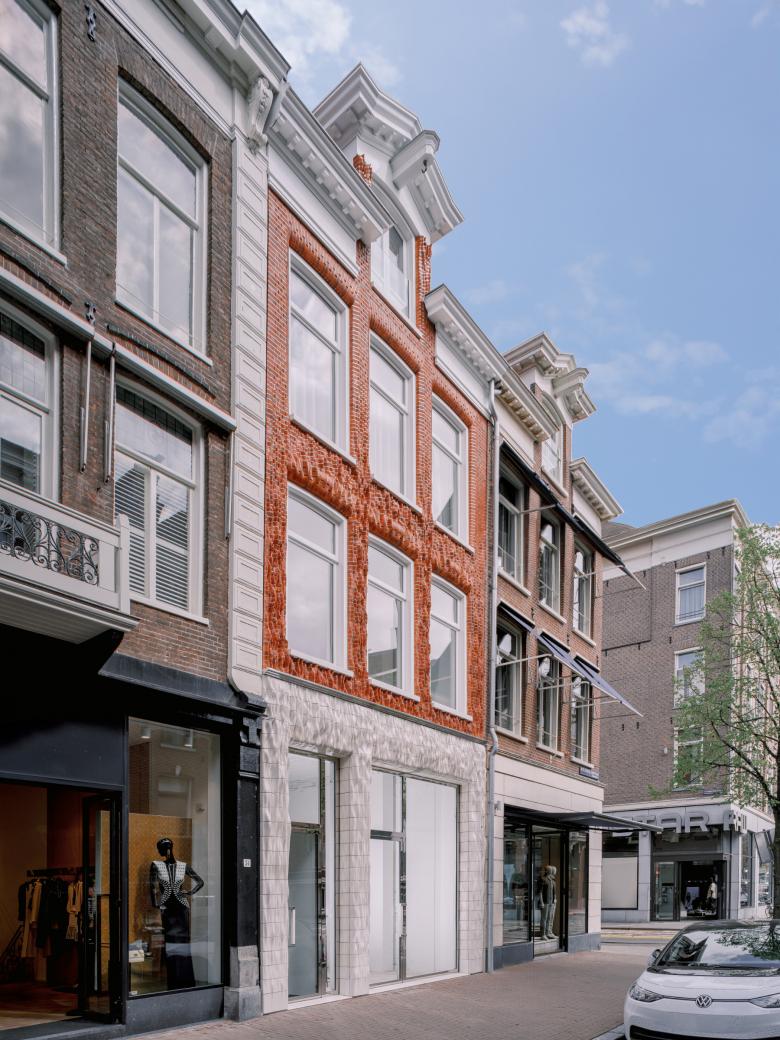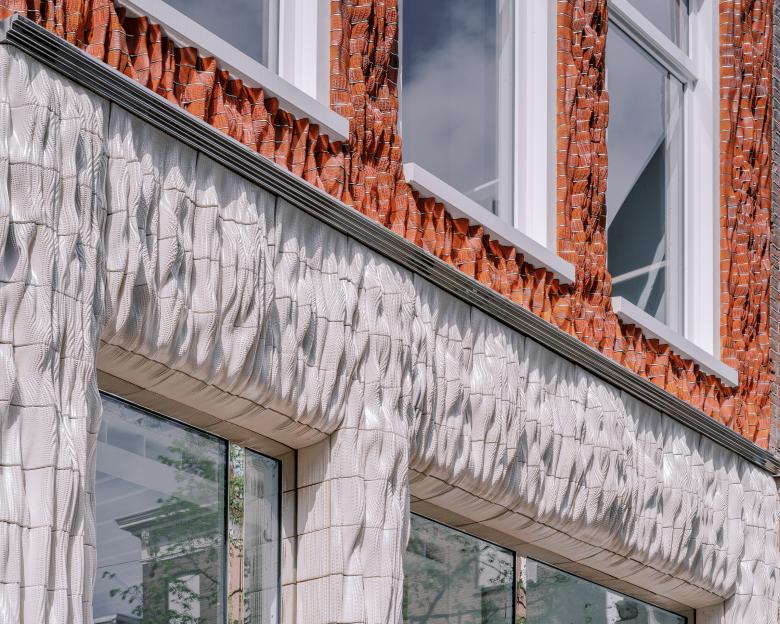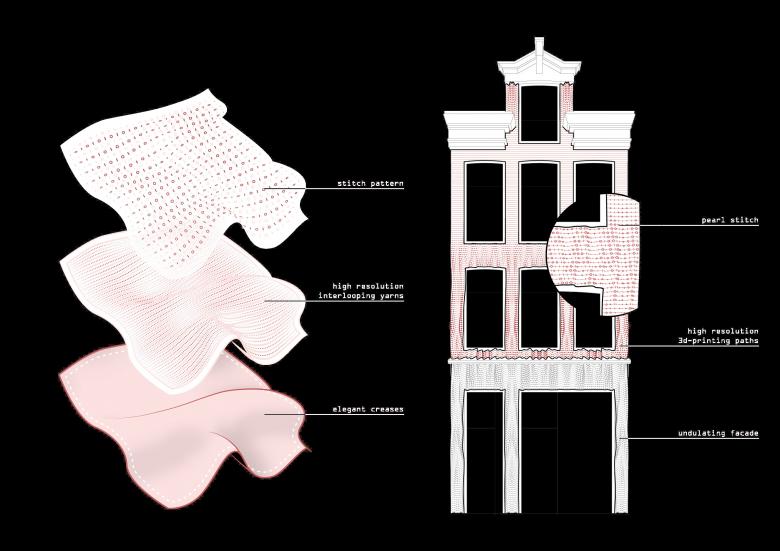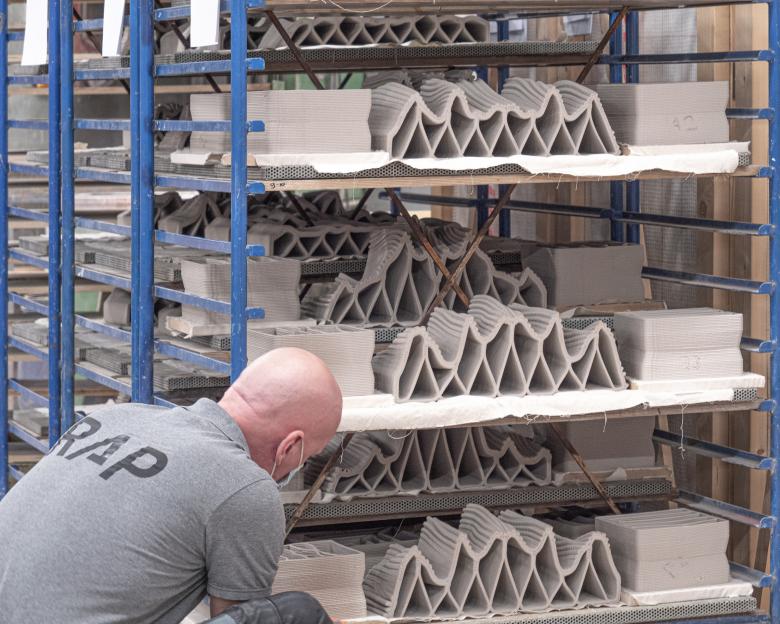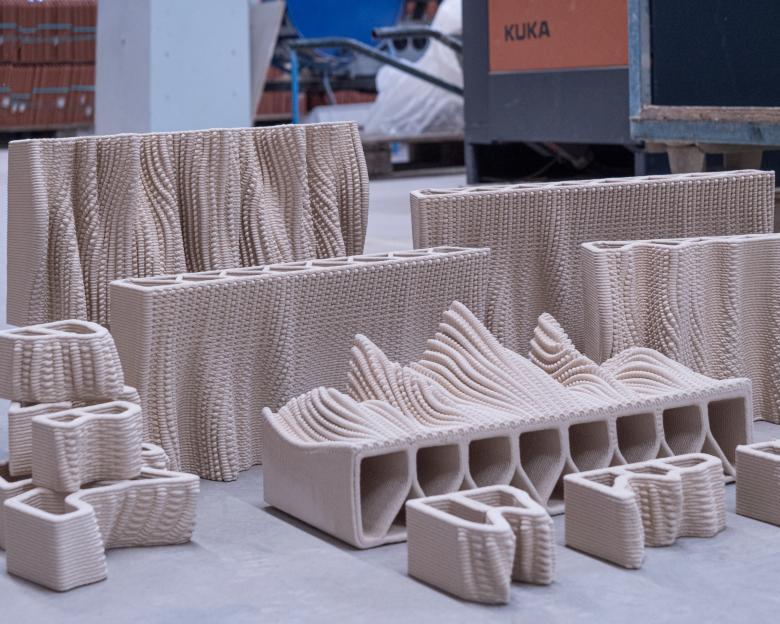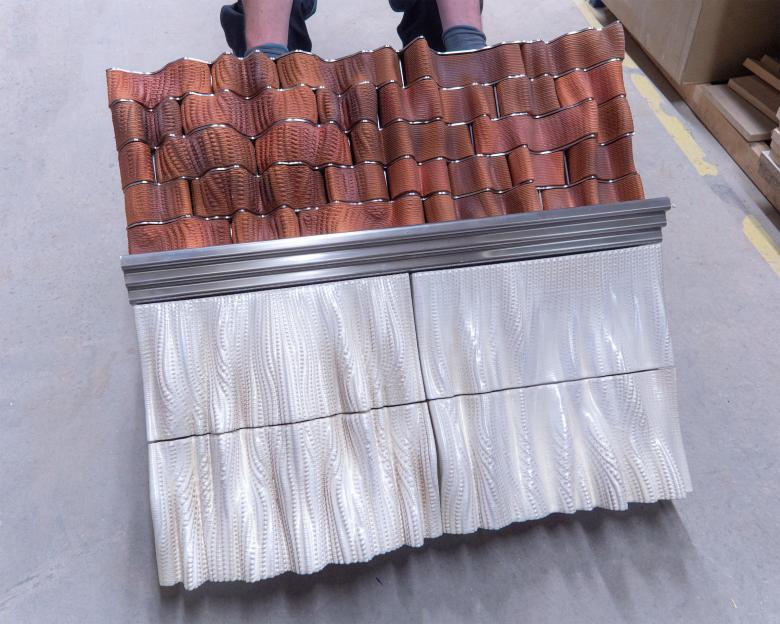6. December 2023
Photo: Riccardo De Vecchi (All images courtesy of v2com)
Rotterdam's Studio RAP recently completed Ceramic House, a new facade on Pieter Cornelisz Hooftstraat, Amsterdam's famous designer shopping street. Algorithmic design and 3D printing combined to create a contemporary riff on traditional masonry architecture.
Location: PC Hooftstraat, Amsterdam
Client: Warenar Real Estate
Architect: Studio RAP
Co-Architect: Gietermans & Van Dijk
Contractor Facade Cladding / 3D-Ceramic Printing: Studio RAP
Firing and Glazing: Royal Tichelaar
Main Contractor: Wessels Zeist (VolkerWessels)
Photo: Riccardo De Vecchi
There must be something about PC Hooftstraat that makes it amenable to innovative explorations in architectural materials. MVRDV designed a replica facade made of traditional terracotta bricks that dissolve into solid glass bricks at street level back in 2016. A few years later, UNStudio renovated another facade on the shopping street with glass boxes that appear to flow like fabric. In those instances, the tops of the buildings retained their traditional features — cornices, dormers, hoisting beams — but the architects, given almost free rein in cladding the storefront and two upper floors, created contemporary expressions in masonry and glass. The same tactic is on display with Studio RAP's Ceramic House.
Photo: Riccardo De Vecchi
Studio RAP retained the silhouette and tripartite structure of the existing facade to maintain the basic character of the building and the way it fits in with its neighbors on PC Hooftstraat. Passersby might not even notice the building with just a quick glance, but a closer look reveals the atypical, undulating character of the masonry. The retail storefront and entrance to the upper floors are framed in white glazed 3D-printed tiles. The masonry facade on the upper floors is made from 3D-printed bricks glazed in three distinct shades of red. While the storefront tiles fade from smooth to complex as they rise vertically, the rippling texture of the bricks fades from complex on the first floor to flat on the second, as evidenced by the two photos below.
Photo: Riccardo De Vecchi
Photo: Riccardo De Vecchi
The following captions for drawings and photographs showing the fabrication and assembly of the facade reveal additional information about Studio RAP's Ceramic House.
Studio RAP describes Ceramic House as “a luxury boutique that harmonizes with its historical environment, while standing out among the surrounding buildings.” (Drawing: Studio RAP)
Studio RAP drew inspiration from the Rijksmuseum's collection of ceramics and textiles: “elegant creases, interlooping yarns, and stitch patterns.” (Drawing: Studio RAP)
Studio RAP has its own manufacturing premises where robots printed each bespoke 3D-printed ceramic tile. (Photo: Studio RAP)
These tiles drying after being printed reveal the structure required to maintain their shapes. (Photo: Studio RAP)
The intricate surface textures inspired by textiles is apparent in these pre-glazed pieces. (Photo: Studio RAP)
The storefront's 3D-printed ceramic tiles, approximately 40x20cm each, were glazed in pearl white, “with a subtle touch of yellow, by Royal Tichelaar,” per the studio. (Photo: Studio RAP)
The smoothness of the texture at the base of the storefront can be seen in this photo of a panel made from a couple-dozen tiles before its erected on the facade. (Photo: Studio RAP)
The maximum complexity of textures on the surfaces of the tiles occurs where the white tiles and red bricks meet. (Photo: Studio RAP)
This photo of the individual bricks for the upper floors reveals how the three shades of red were applied to their outward-facing surfaces. (Photo: Studio RAP)
According to the studio, the bricks “are put into laser-cut stainless steel cassettes, referring to the original flushes.” (Photo: Studio RAP)
The bricks before they are installed on the facade. (Photo: Studio RAP)
The bricks as they were installed into the cassettes on the facade. (Photo: Studio RAP)
Close-up of the bricks in place: it's easy to consider how the edges of the stainless steel cassettes could be “read” as masonry joints by passersby. (Photo: Studio RAP)
Related articles
-
Reinterpreting Glazed Ceramics in Amsterdam
on 12/6/23
-
For the Workforce and Tenants – and Citizens
on 6/12/23
-
The Looking Glass
on 12/13/19
-
Vertical Lofts
on 7/2/19
-
Amsterdamsche Tram
on 7/16/15
